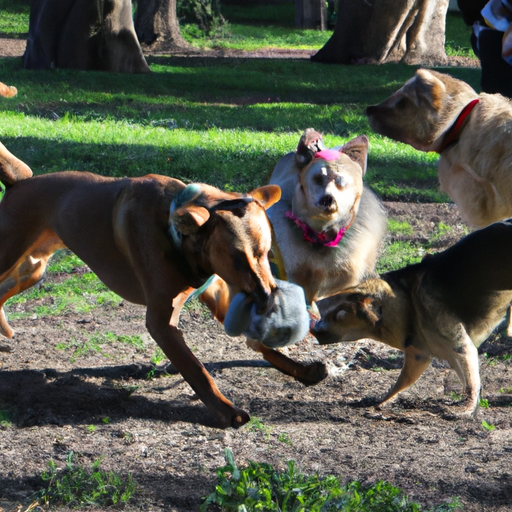Introduction
If you’ve ever watched two dogs play, you’ve likely noticed a lot of barking, growling, and seemingly aggressive behavior. But don’t worry. This is just how dogs communicate and engage with one another. As a caregiver, understanding this behavior can help you ensure your pet is having a healthy, enjoyable playtime.
Understanding Dog’s Play Behavior
Dogs are social beings, and play is an essential part of their socialization process. When dogs play, they employ a variety of behaviors:
- Play Bow: This is when a dog bends its front legs and leans its body forward while keeping its rear end up in the air. It’s a clear signal that the dog wants to play, not fight.
- Barking and Growling: Contrary to what we might think, these sounds are often signs of playful intentions. However, it’s essential to pay attention to the tone and body language accompanying these noises.
- Biting and Mouthing: Dogs often use their mouths in play, but this should be gentle and non-aggressive. If the biting becomes hard, it’s time to intervene.
Recognizing Healthy Play
It’s crucial to understand the difference between healthy play and aggressive behavior. Here are some key indicators of healthy play:
- Both dogs are willing participants
- The play is balanced, with both dogs taking turns being the “chaser” and the “chasee”
- The dogs take breaks during their play session
When Playtime Turns Aggressive
Despite our best efforts, sometimes play can turn into aggression. It’s essential to intervene when you notice:
- One dog seems scared or overwhelmed
- There’s an escalation in aggression
- There’s a lack of pause or breaks in the play
Encouraging Safe Play
As a caregiver, you can encourage safe play by following these steps:
- Introduce new dogs slowly: Allow them to sniff each other and get accustomed to one another before they start playing.
- Monitor their play: Keep an eye on their body language and intervene if things start to escalate.
- Teach them commands: Commands like “stop” or “no” can help control the situation if it gets out of hand.
| Tips for Safe Play | Description |
|---|---|
| Monitor Body Language | Look for signs of stress or aggression. |
| Introduce New Dogs Slowly | Let them sniff and get to know each other. |
| Use Commands | Teach your dog to respond to “stop” or “no”. |
Frequently Asked Questions
Q: My dog growls during play. Is this normal?
A: Yes, growling can be a normal part of play, as long as it’s not accompanied by aggressive body language.
Q: How can I tell if play is getting too rough?
A: Look for signs of stress or fear in one of the dogs, escalation in aggression, or a lack of pause in their play.
Q: My dog doesn’t like to play with other dogs. Is this a problem?
A: Not necessarily. Some dogs prefer human companionship or playing with toys. As long as your dog is getting enough exercise and socialization, it’s okay.
Remember, understanding and supervising your dog’s play behavior is essential to ensure they’re having a safe, enjoyable time.



